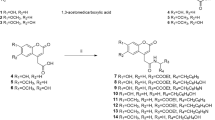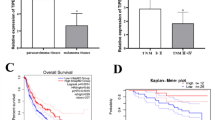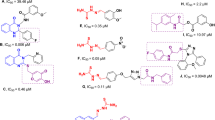Abstract
Aim:
To investigate the effect of [6]-shogaol, an active ingredient in ginger, on melanogenesis and the underlying mechanisms.
Methods:
B16F10 mouse melanoma cells were tested. Cell viability was determined with the MTT assay. Melanin content and tyrosinase activity were analyzed with a spectrophotometer. The protein expression of tyrosinase and microphthalmia associated transcription factor (MITF), as well as phosphorylated or total ERK1/2 and Akt were measured using Western blot.
Results:
Treatment of the cells with [6]-shogaol (1, 5, 10 μmol/L) reduced the melanin content in a concentration-dependent manner. [6]-Shogaol (5 and 10 μmol/L) significantly decreased the intracellular tyrosinase activity, and markedly suppressed the expression levels of tyrosinase and MITF proteins in the cells. Furthermore, [6]-shogaol (10 μmol/L) activated ERK, which was known to negatively regulate melanin synthesis in these cells. Pretreatment with the specific ERK pathway inhibitor PD98059 (20 μmol/L) greatly attenuated the inhibition of melanin synthesis by [6]-shogaol (10 μmol/L).
Conclusion:
The results demonstrate that [6]-shogaol inhibits melanogenesis in B16F10 mouse melanoma cells via activating the ERK pathway.
Similar content being viewed by others
Log in or create a free account to read this content
Gain free access to this article, as well as selected content from this journal and more on nature.com
or
References
Boissy RE . Melanosome transfer to and translocation in the keratinocyte. Exp Dermatol 2003; 12: 5–12.
Ortonne JP, Ballotti R . Melanocyte biology and melanogenesis: what's new? J Dermatol Treat 2000; 11: S15–6.
Yaar M, Gilchrest BA . Melanocyte biology: before, during, and after the Fitzpatrick era. J Invest Dermatol 2004; 122: xxvii–xxix.
Bentley NJ, Eisen T, Goding CR . Melanocyte-specific expression of the human tyrosinase promoter: activation by the microphthalmia gene product and role of the initiator. Mol Cell Biol 1994; 14: 7996–8006.
Yasumoto K, Yokoyama K, Takahashi K, Tomita Y, Shibahara S . Functional analysis of microphthalmia-associated transcription factor in pigment cell-specific transcription of the human tyrosinase family genes. J Biol Chem 1997; 272: 503–9.
Bertolotto C, Busca R, Abbe P, Bille K, Aberdam E, Ortonne JP, et al. Different cis-acting elements are involved in the regulation of TRP1 and TRP2 promoter activities by cyclic AMP: pivotal role of M boxes (GTCATGTGCT) and of microphthalmia. Mol Cell Biol 1998; 18: 694–702.
Gilchrest BA, Park HY, Eller MS, Yaar M . Mechanisms of ultraviolet light-induced pigmentation. Photochem Photobiol 1996; 63: 1–10.
Yamaguchi Y, Hearing VJ . Physiological factors that regulate skin pigmentation. Biofactors 2009; 35: 193–9.
Englaro W, Rezzonico R, Durand-Clement M, Lallemand D, Ortonne JP, Ballotti R . Mitogen-activated protein kinase pathway and AP-1 are activated during cAMP-induced melanogenesis in B-16 melanoma cells. J Biol Chem 1995; 270: 24315–20.
Imokawa G, Yada Y, Kimura M . Signalling mechanisms of endothelin-induced mitogenesis and melanogenesis in human melanocytes. Biochem J 1996; 314: 305–12.
Miyamura Y, Coelho SG, Wolber R, Miller SA, Wakamatsu K, Zmudzka BZ, et al. Regulation of human skin pigmentation and responses to ultraviolet radiation. Pigment Cell Res 2007; 20: 2–13.
Yamaguchi Y, Brenner M, Hearing VJ . The regulation of skin pigmentation. J Biol Chem 2007; 282: 27557–61.
Ganesan AK, Ho H, Bodemann B, Petersen S, Aruri J, Koshy S, et al. Genome-wide siRNA-based functional genomics of pigmentation identifies novel genes and pathways that impact melanogenesis in human cells. PLoS Genet 2008; 4: e1000298.
Busca R, Bertolotto C, Ortonne JP, Ballotti R . Inhibition of the phosphatidylinositol 3-kinase/p70(S6)-kinase pathway induces B16 melanoma cell differentiation. J Biol Chem 1996; 271: 31824–30.
Oka M, Nagai H, Ando H, Fukunaga M, Matsumura M, Araki K, et al. Regulation of melanogenesis through phosphatidylinositol 3-kinase-Akt pathway in human G361 melanoma cells. J Invest Dermatol 2000; 115: 699–703.
Kim DS, Kim SY, Chung JH, Kim KH, Eun HC, Park KC . Delayed ERK activation by ceramide reduces melanin synthesis in human melanocytes. Cell Signal 2002; 14: 779–85.
Khaled M, Larribere L, Bille K, Ortonne JP, Ballotti R, Bertolotto C . Microphthalmia associated transcription factor is a target of the phosphatidylinositol-3-kinase pathway. J Invest Dermatol 2003; 121: 831–6.
Li X, Guo L, Sun Y, Zhou J, Gu Y, Li Y . Baicalein inhibits melanogenesis through activation of the ERK signaling pathway. Int J Mol Med 2010; 25: 923–7.
Sehgal VN, Verma P, Srivastava G, Aggarwal AK, Verma S . Melasma: treatment strategy. J Cosmet Laser Ther 2011; 13: 265–79.
Boissy RE, Visscher M, DeLong MA . DeoxyArbutin: a novel reversible tyrosinase inhibitor with effective in vivo skin lightening potency. Exp Dermatol 2005; 14: 601–8.
Serra-Baldrich E, Tribo MJ, Camarasa JG . Allergic contact dermatitis from kojic acid. Contact Dermatitis 1998; 39: 86–7.
O'Donoghue JL . Hydroquinone and its analogues in dermatology — a risk-benefit viewpoint. J Cosmet Dermatol 2006; 5: 196–203.
Levy AS, Simon O, Shelly J, Gardener M . 6-Shogaol reduced chronic inflammatory response in the knees of rats treated with complete Freund's adjuvant. BMC Pharmacol 2006; 6: 12.
Ling H, Yang H, Tan SH, Chui WK, Chew EH . 6-Shogaol, an active constituent of ginger, inhibits breast cancer cell invasion by reducing matrix metalloproteinase-9 expression via blockade of nuclear factor-kappaB activation. Br J Pharmacol 2010; 161: 1763–77.
Smalley K, Eisen T . The involvement of p38 mitogen-activated protein kinase in the alpha-melanocyte stimulating hormone (alpha-MSH)-induced melanogenic and anti-proliferative effects in B16 murine melanoma cells. FEBS Lett 2000; 476: 198–202.
Kim DS, Jeong YM, Park IK, Hahn HG, Lee HK, Kwon SB, et al. A new 2-imino-1,3-thiazoline derivative, KHG22394, inhibits melanin synthesis in mouse B16 melanoma cells. Biol Pharm Bull 2007; 30: 180–3.
Jang JY, Lee JH, Kang BW, Chung KT, Choi YH, Choi BT . Dichloromethane fraction of Cimicifuga heracleifolia decreases the level of melanin synthesis by activating the ERK or AKT signaling pathway in B16F10 cells. Exp Dermatol 2009; 18: 232–7.
Wu M, Hemesath TJ, Takemoto CM, Horstmann MA, Wells AG, Price ER, et al. c-Kit triggers dual phosphorylations, which couple activation and degradation of the essential melanocyte factor Mi. Genes Dev 2000; 14: 301–12.
Khaled M, Larribere L, Bille K, Aberdam E, Ortonne JP, Ballotti R, et al. Glycogen synthase kinase 3beta is activated by cAMP and plays an active role in the regulation of melanogenesis. J Biol Chem 2002; 277: 33690–7.
Vimala S, Norhanom AW, Yadav M . Anti-tumour promoter activity in Malaysian ginger rhizobia used in traditional medicine. Br J Cancer 1999; 80: 110–6.
Srivastava KC, Mustafa T . Ginger (Zingiber officinale) and rheumatic disorders. Med Hypotheses 1989; 29: 25–8.
Ghayur MN, Gilani AH . Pharmacological basis for the medicinal use of ginger in gastrointestinal disorders. Dig Dis Sci 2005; 50: 1889–97.
del Marmol V, Beermann F . Tyrosinase and related proteins in mammalian pigmentation. FEBS Lett 1996; 381: 165–8.
Inagaki H, Bessho Y, Koga A, Hori H . Expression of the tyrosinase-encoding gene in a colorless melanophore mutant of the medaka fish, Oryzias latipes. Gene 1994; 150: 319–24.
Gaggioli C, Busca R, Abbe P, Ortonne JP, Ballotti R . Microphthalmia-associated transcription factor (MITF) is required but is not sufficient to induce the expression of melanogenic genes. Pigment Cell Res 2003; 16: 374–82.
Cowley S, Paterson H, Kemp P, Marshall CJ . Activation of MAP kinase kinase is necessary and sufficient for PC12 differentiation and for transformation of NIH 3T3 cells. Cell 1994; 77: 841–52.
Sale EM, Atkinson PG, Sale GJ . Requirement of MAP kinase for differentiation of fibroblasts to adipocytes, for insulin activation of p90 S6 kinase and for insulin or serum stimulation of DNA synthesis. EMBO J 1995; 14: 674–84.
Goodall J, Carreira S, Denat L, Kobi D, Davidson I, Nuciforo P, et al. Brn-2 represses microphthalmia-associated transcription factor expression and marks a distinct subpopulation of microphthalmia-associated transcription factor-negative melanoma cells. Cancer Res 2008; 68: 7788–94.
Ahmad S, Singh N, Glazer RI . Role of AKT1 in 17beta-estradiol- and insulin-like growth factor I (IGF-I)-dependent proliferation and prevention of apoptosis in MCF-7 breast carcinoma cells. Biochem Pharmacol 1999; 58: 425–30.
Tang Y, Zhou H, Chen A, Pittman RN, Field J . The Akt proto-oncogene links Ras to Pak and cell survival signals. J Biol Chem 2000; 275: 9106–9.
Acknowledgements
This work was supported by the Basic Science Research Program through the National Research Foundation of Korea (NRF) funded by the Ministry of Education, Science and Technology (2010-0008196).
Author information
Authors and Affiliations
Corresponding authors
Rights and permissions
About this article
Cite this article
Yao, C., Oh, Jh., Oh, I. et al. [6]-Shogaol inhibits melanogenesis in B16 mouse melanoma cells through activation of the ERK pathway. Acta Pharmacol Sin 34, 289–294 (2013). https://doi.org/10.1038/aps.2012.134
Received:
Accepted:
Published:
Issue date:
DOI: https://doi.org/10.1038/aps.2012.134
Keywords
This article is cited by
-
Hosta longipes inhibits melanogenesis by reducing expression of the melanocortin 1 receptor
Molecular & Cellular Toxicology (2021)
-
Padina boryana, a brown alga from the Maldives: inhibition of α-MSH-stimulated melanogenesis via the activation of ERK in B16F10 cells
Fisheries and Aquatic Sciences (2020)
-
Structure-activity relationship for vanilloid compounds from extract of Zingiber officinale var rubrum rhizomes: effect on extracellular melanogenesis inhibitory activity
Medicinal Chemistry Research (2019)
-
Metabolomics reveals the mechanisms for the cardiotoxicity of Pinelliae Rhizoma and the toxicity-reducing effect of processing
Scientific Reports (2016)
-
Down-regulation of MITF, TRP-1, TRP-2, and tyrosinase expressions by compounds isolated from Pruni persicae Flos in murine B16F10 melanoma
Journal of the Korean Society for Applied Biological Chemistry (2014)



